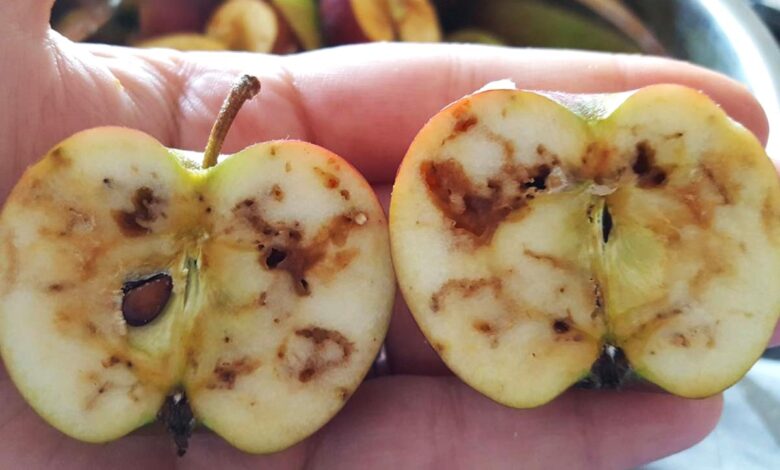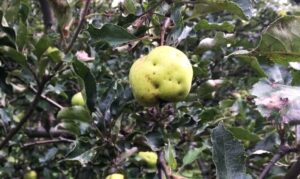
An entire crop can be destroyed by apple maggots, leaving you unsure of what to do. Fighting off these pests requires knowing how to spot the warning signals and taking the necessary precautions in advance.
Signs of Apple Maggots
Apple maggot pests are primarily found on apple trees, however they can also be found in any of the following:
Plum, cherry pear, apricot, hawthorn, crabapple, and wild rose
Apple varieties with thin skins and those that mature early are the most vulnerable. Although these pests can be mistaken for other worms that damage apples, you can usually tell them distinct just by looking more closely. Larger in size, caterpillar worms typically feed deeper, all the way to the core. Apple maggots, which are tiny fruit fly larvae that resemble maggots and are around ¼ inch (6 mm) in size, usually tunnel throughout the fruit and feast on its flesh. Tiny pin pricks, often known as dimples, in the skin are indicative of apple maggots. Furthermore, impacted apples will start to deteriorate quite quickly, turning mushy and rotting before they fall from the tree. When the fruit is ripped open, you can see the distinctive brown trails left by the growing and tunneling maggots.
How to Prevent and Treat Apple Maggots
Keeping everything tidy and harvesting apples frequently—especially those that fall from the tree—is the best defense against attacks. Unfortunately, chemical control—which is often directed at the adult fruit flies—is the only way to cure the disease once it has been contracted.

You may typically get information on the precise kinds and availability of apple maggot control products from the county extension office in your area. According to product directions, affected trees are sprayed continuously from about mid-July until pre-harvest, or they are combined with three cups (710 mL) of kaolin clay for every gallon (4 L) of water every seven to ten days. Kaolin clay is another, more natural, apple maggot control solution. Because it leaves a film on the fruit that irritates insect pests, this is frequently employed as a prophylactic precaution. They thus tend to stay away from any plants or trees that have received kaolin clay treatment. Mid- to late-June is the ideal time to spray, and it should be repeated every seven to ten days. Make sure the tree is completely saturated.
Methods for Catching Apple Maggots
To stop these pests, apple maggot fly traps are also available. The majority of garden centers and agricultural suppliers sell these. Typically, apple maggot fly traps are set in June for the spring and observed in September for the fall. For trees under 8 feet (2 meters) tall, set one trap; for larger trees, set two to four traps. Weekly cleaning is recommended for traps, which may need to be replaced every month.
How to Catch Apple Maggots at Home
Using do-it-yourself techniques is another way to catch apple maggots. For example, you can coat some red balls, around the size of an apple (Styrofoam works great), with a sticky substance like molasses. Depending on the size of the tree, hang four to six of these imitation apples at shoulder height. The fruit flies should be drawn to this, adhere to the balls, and then be thrown out as soon as they are full. Another option is to combine 1 part molasses with 9 parts water and a tiny bit of yeast. Transfer this mixture into multiple jars with a wide opening and let it ferment (it will be ready when the bubbling stops). Fruit flies will be caught inside the jars if they are hung from the strongest branches.





